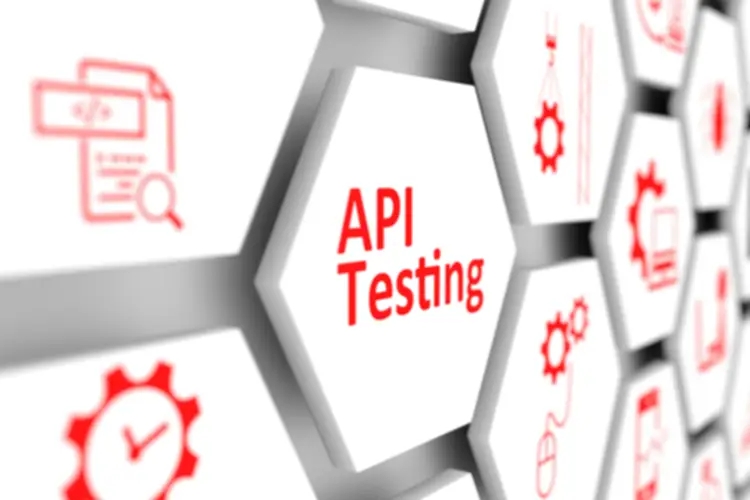The transformative power of generative AI in the insurance industry: Opportunities and risks

By understanding someone’s potential risk profile, insurance companies can make more informed decisions about whether to offer someone coverage and at what price. Generative AI has the potential to revolutionise customer service in the insurance industry. AI-driven chatbots are already engaging in natural language conversations with customers, providing real-time assistance and answers to queries. Tower Insurance, for instance, boasts a chatbot named Charlie, ‘born and bred in Auckland’. At present, these chatbots tend to be limited to answering simple queries or directing customers to the right page of a website. A question about whether there was a maximum sum insured for a house was answered with a suggestion that we refer to the policy wording, along with some information relating to cover for lawns, flowers and shrubs.
This also includes educating the people that are using generative AI on with respect to best practices and potential pitfalls. Analyzing vast datasets and identifying hidden patterns, enhances risk assessment accuracy and helps insurers make more informed policy decisions. Connect with LeewayHertz’s team of AI experts to explore tailored solutions that enhance efficiency, streamline processes, and elevate customer experiences. With robust apps built on ZBrain, insurance professionals can transform complex data into actionable insights, ensuring heightened operational efficiency, minimized error rates, and elevated overall quality in insurance processes. ZBrain stands out as a versatile solution, offering comprehensive answers to some of the most intricate challenges in the insurance industry.

This fear of the unknown can result in failed projects that negatively impact customer service and lead to losses. Generative AI holds immense potential in the insurance industry, but addressing safety concerns is key. Through transparency, compliance, accuracy, accountability, and bias mitigation, insurers can responsibly unlock the transformative power of generative AI are insurance coverage clients prepared for generative ai? automation. Most out-of-the-box generative AI solutions don’t adhere to the strict regulations within the industry, making it unsafe for insurance companies to adopt such new technologies at scale, despite their advantages. With requirements to protect consumers and ensure fair practices, conversational AI systems that use generative AI must align with these regulations.
These models distinguish themselves with numerous layers that can distill a wealth of information from vast datasets, leading to rapid and precise learning. They convert text into numerical values known as embeddings, which enable nuanced natural language processing tasks. The technological underpinnings of generative AI in insurance are robust, leveraging the latest advancements in machine learning and neural networks. This tech stack is not only complex but highly adaptable, catering to an array of applications that enhance insurance products and services. Generative AI’s deep learning capabilities extend insurers’ foresight, analyzing demographic and historical data to uncover risk factors that may escape human analysis. This predictive power allows insurers to stay ahead, anticipating and mitigating risks before they manifest.
The use of generative AI, a technology still very much in its infancy, is not without risk. Cybercriminals are already one step ahead, leveraging the technology to write malicious code and perpetrate deepfake attacks, taking social engineering and business email compromise (BEC) tactics to a new level of sophistication. “You can immediately see how over-reliance on AI, if unchecked or unsupervised, has the potential to compromise advice,” explains Ben Waterton, executive director, Professional Indemnity at Gallagher.
Using Skan’s “digital twin” tech, one Fortune 100 insurer achieved over $10 million in savings. Amidst evolving global regulations, including the EU’s Artificial Intelligence Act, insurance companies recognized the need to test Gen AI tools for potential risk. Whether it’s Robotic Process Automation, fraud detection, or workflow automation, there’s always something new promising sweeping change well into the next decade. Finally, insurance companies can use Generative Artificial Intelligence to extract valuable business insights and act on them. For example, Generative Artificial Intelligence can collect, clean, organize, and analyze large data sets related to an insurance company’s internal productivity and sales metrics.
Insurers must be cautious in the selection and pre-processing of training data to ensure equitable outcomes. Insurance brokers play a crucial role in connecting customers with suitable insurance providers. Generative AI can assist brokers by analysing customer profiles against insurers’ offerings to match customers with the most appropriate insurers and policies. There is an obvious potential not only to save time for brokers but also to ensure that customers receive policies that align with their needs and preferences. There is a risk, however, that over-reliance on AI tools may lead brokers into error, particularly if the tool does not have all the relevant and up to date information. Over the course of the next three years, there will be many promising use cases for generative AI.
Generative artificial intelligence (AI) has arrived in force and has the potential to transform many ways insurers do business. Poster child of the age of acceleration, it has gained daily media coverage, and its possibilities have captivated headlines. Deloitte refers to one or more of Deloitte Touche Tohmatsu Limited (“DTTL”), its global network of member firms, and their related entities (collectively, the “Deloitte organization”).
How does generative AI contribute to the growth of peer-to-peer insurance models?
They can analyse client conversations, automate notetaking, augmentation with structured information, and adapt to conversations in real time’. Generative AI in insurance has the potential to support underwriters by identifying essential documents and extracting crucial data, freeing them up to focus on higher value tasks. Their days are often filled with monotonous, time-intensive tasks, such as locating and reviewing countless documents to extract the information they need to evaluate risks relating to their large corporate clients. To address generative AI concerns and take advantage of its benefits, your organization can start small with clear guardrails and then adopt and mature a governance strategy.
Telcos Turn to AI to Solve Their Biggest Problems – RTInsights
Telcos Turn to AI to Solve Their Biggest Problems.
Posted: Wed, 27 Mar 2024 07:00:00 GMT [source]
Generative AI analyzes historical data, market trends, and emerging risks to provide real-time risk assessments, enabling insurers to adapt proactively. By automating various processes, generative AI reduces the need for manual intervention, leading to cost savings and improved operational efficiency for insurers. Automated claims processing, underwriting, and customer interactions free up resources and enable insurers to focus on higher-value tasks.
Top 3 Considerations When Choosing a Software Testing Services Provider
By highlighting similarities with other clients, generative AI can make this knowledge transferable and compound its value. Later, it can also be used to personalize interactions and offer Chat GPT insurance products tailored to individual needs. Generative AI refers to a type of artificial intelligence that has the ability to create new materials, based on the given information.
Its versatility allows insurance companies to streamline processes and enhance various aspects of their operations. Generative AI models can assess risks and underwrite policies more accurately and efficiently. Through the analysis of historical data and pattern recognition, AI algorithms can predict potential risks with greater precision.
Java is a popular and powerful programming language that is widely used in a variety of applications, including web development, mobile app development, and scientific computing. However, successful implementation requires careful planning, addressing data quality challenges, and seamless integration with existing systems. In the following sections, we will delve into practical implementation strategies for generative AI in these areas, providing actionable insights for insurance professionals eager to leverage this technology to its fullest potential.
Existing data management capabilities (e.g., modeling, storage, processing) and governance (e.g., lineage and traceability) may not be sufficient or possible to manage all these data-related risks. In insurance underwriting, GenAI refers to the application of generative AI to enhance risk assessment accuracy. This is a significant topic in generative AI for business leaders, focusing on analyzing data for better policy pricing and coverage decisions. AI, including generative AI for enterprises, can be utilized in businesses for multiple purposes. Its use in predictive analytics aids in better decision-making, in customer relationship management to tailor customer experiences, and in supply chain management for effective forecasting.
It has the capability to extract pertinent information from documents, and detect discrepancies claims based on patterns and anomalies in the data. An insurance app development services provider can design and implement these chatbots and integrate them into insurance mobile apps for seamless customer interactions. According to the FBI, $40 billion is lost to insurance fraud each year, costing the average family $400 to $700 annually. Although it’s impossible to prevent all insurance fraud, insurance companies typically offset its cost by incorporating it into insurance premiums.
EY refers to the global organization, and may refer to one or more, of the member firms of Ernst & Young Global Limited, each of which is a separate legal entity. Ernst & Young Global Limited, a UK company limited by guarantee, does not provide services to clients. With AI’s potential exceedingly clear, it is easy to understand why companies across virtually every industry are turning to it. As insurers begin to adopt this technology, they must do so with a focus on manageable use cases. Discover how EY insights and services are helping to reframe the future of your industry.
For example, property insurers can utilize generative AI to automatically process claims for damages caused by natural disasters, automating the assessment and settlement for affected policyholders. This unique capability empowers insurers to make faster and more informed decisions, leading to better risk assessments, more accurate underwriting, and streamlined claims processing. With generative AI, insurers can stay ahead of the curve, adapting rapidly to the ever-evolving insurance landscape. Accuracy is crucial in insurance, as decisions are based on risk assessments and data analysis.
● Risk Assessment and Fraud Detection
This structured flow offers a comprehensive overview of how AI facilitates insurance processes, utilizing diverse data sources and technological tools to generate precise and actionable insights. However, generative AI, being more complex and capable of generating new content, raises challenges related to ethical use, fairness, and bias, requiring greater attention to ensure responsible implementation. Traditional AI systems are more transparent and easier to explain, which can be crucial for regulatory compliance and ethical considerations. Generative AI tools can be used to create policy documents, marketing materials, customer communications, and product descriptions, speeding up the process and offering personalization. Our Property Risk Management collection gives you access to the latest insights from Aon’s thought leaders to help organizations make better decisions.
- All these models require thorough training, fine-tuning, and refinement, with larger models capable of few-shot learning for quick adaptation to new tasks.
- Digital solutions can make the high-stakes claims experience seamless, but industry data indicates a chasm between customer preferences and reality.
- Deep learning has ushered in a new era of AI capabilities, with models such as transformers and advanced neural networks operating on a scale previously unimaginable.
- As the insurance sector continues to explore and implement generative AI, several opportunities and risks come to the forefront.
- These models and proprietary data will be hosted within a secure IBM Cloud® environment, specifically designed to meet regulatory industry compliance requirements for hyperscalers.
The industry needs help with issues such as inadequate claims reporting, disputes, untimely status updates, and final settlements, which can hurt their growth and customer satisfaction. Generative AI is transforming the insurance industry by streamlining operations, improving customer experience, and reducing costs. The technology offers several use cases, including risk assessment, underwriting, claims processing, fraud detection, and marketing personalization. Generative AI can create synthetic data, which can be used to improve the performance of predictive models and maintain customer privacy. In the context of insurance, GANs can be employed to generate synthetic but realistic insurance-related data, such as policyholder demographics, claims records, or risk assessment data.
Appian partner EXL is actively working to explore the vast potential of generative AI and help insurers unlock the full power of this technology within the Appian Platform. By taking over routine tasks, generative AI minimizes the need for extensive manual labor. Additionally, it allows employees to focus on more complex and value-added activities, boosting overall productivity. Following the same principles, AI can evaluate a claim and write a response nearly instantly, allowing customers to save time and make a quick appeal if needed.
These models can predict if a new claim has a high chance of being fraudulent, thereby saving the company money. By identifying unusual patterns, such as a sudden increase in claims from a particular region, the AI system raises an alert. You can foun additiona information about ai customer service and artificial intelligence and NLP. Investigating further, the insurer discovers a coordinated fraud scheme and takes immediate action, preventing substantial financial losses. Generative AI automates and streamlines this process, leading to faster claim settlements, reduced administrative overhead, and improved customer experiences. Yes, several generative AI models, including Variational Autoencoders (VAEs), Generative Adversarial Networks (GANs), and Transformer Models, are commonly used in the insurance sector. Each model serves specific purposes, such as data generation and natural language processing.
How do I prepare for generative AI?
Several key steps must be performed to build a successful generative AI solution, including defining the problem, collecting and preprocessing data, selecting appropriate algorithms and models, training and fine-tuning the models, and deploying the solution in a real-world context.
While generative AI can produce impressive results, the lack of transparency in how it arrives at conclusions can pose challenges. Insurers will need to ensure that AI-driven decisions are accurate and understandable, as complex models may produce outputs that are difficult to interpret or validate. ChatGPT famously produces wildly inaccurate statements and conclusions at times, which is a reflection of the unreliability of parts of the data pool from which it draws. Lawyers using it to draft legal opinions or submissions have been surprised to find cases referred to that do not support the principles or conclusions for which they are cited, and in some instances are even wholly imaginary. Ultimately, the hope is that AI technology will free up insurance and claims professionals to focus on making more informed risk-based decisions and building relationships with customers. For now, far from replacing the underwriter, GenAI will instead be fine-tuned to offer prompts and suggestions that will ultimately lead to better risk selection and more profitable outcomes.
Gen AI is solving the unstructured document problem for insurers—a boon for today’s organizations where 80–90% of data is unstructured. When computers better understand more complex file types, they can also help us keep them better organized. Insurers are using Gen AI to automatically produce novel documents such as policy papers, insurance agreements, customer letters, and claim forms.
At a 2023 global summit within the World Economic Forum framework – with Cognizant one of the contributors – experts and policymakers delivered recommendations for responsible AI stewardship. One line of action outlined by MAPFRE is the increased demand for cyber protection through insurance, given the evolving sophistication of cyberattacks facilitated by AI. This includes suitable coverage and services aimed at preventing, detecting, responding to, and recovering from cyberattacks. We’ll help you decide on next steps, explain how the development process is organized, and provide you with a free project estimate. 3 min read – Generative AI can revolutionize tax administration and drive toward a more personalized and ethical future.
It may come as no surprise that generative AI could have significant implications for the insurance industry. It is crucial to ensure strong confidentiality and safety of data processes since insurers handle a huge amount of confidential data, including personal and fiscal data. Generative AI algorithms require access to extensive datasets, raising concerns about data breaches and regulatory compliance. Mobile apps development services providers can create user-friendly claim submission apps with the integration of IoT sensors for real-time data collection in case of claims. GAN systems can monitor claims in real time and trigger alerts when they detect suspicious patterns or deviations from expected behavior.
It can provide valuable insights and automate routine processes, improving operational efficiency. It can create synthetic data for training, augmenting limited datasets, and enhancing the performance of AI models. Generative AI can also generate personalized insurance policies, simulate risk scenarios, and assist in predictive modeling. This is particularly concerning in the context of insurance underwriting, where decisions are made based on the data provided.
It is used for customizing policies, automating claims processing, and improving customer service. It aids in fraud detection and predictive analytics, which are key aspects of generative AI for business leaders in insurance. As the insurance industry continues to evolve, generative AI has already showcased its potential to redefine various processes by seamlessly integrating itself into these processes. Generative AI has left a significant mark on the industry, from risk assessment and fraud detection to customer service and product development. However, the future of generative AI in insurance promises to be even more dynamic and disruptive, ushering in new advancements and opportunities.
What To Keep In Mind When Using Generative AI In Insurance
For instance, take ChatGPT – a generative AI marvel that can craft poetry echoing the nuances of human-written verses. They provide quick and accurate responses, thereby improving client interactions and satisfaction. As we delve deeper, it’s clear that generative AI is transforming the insurance industry, offering both new opportunities and challenges.
The use of generative AI in customer engagement is not just limited to creating content but also extends to designing personalized insurance products and services. The technology’s ability to analyze vast amounts of data and generate insights is enabling insurance companies to understand their customers’ needs better and offer them tailored solutions. Generative AI streamlines the underwriting process by automating risk assessment and decision-making. AI models can analyze historical data, identify patterns, and predict risks, enabling insurers to make more accurate and efficient underwriting decisions. Traditional AI is widely used in the insurance sector for specific tasks like data analysis, risk scoring, and fraud detection.
What problem does generative AI solve?
Overcoming Content Creation Bottlenecks
Generative AI offers a solution to this bottleneck by automating content generation processes. It can produce diverse types of content – from blog posts and social media updates to product descriptions and marketing copy – quickly and efficiently.
Generative AI technology employed by conversational AI systems must be thoroughly tested and continuously monitored to ensure its accuracy. As generative AI is prone to hallucination (inaccurate or incorrect answers), it’s crucial that guardrails are created to avoid risk to the customer, and the company. Generative AI, particularly LLMs, presents a compelling solution to overcome the limitations of human imagination, while also speeding up the traditional, resource-heavy process of scenario development. LLMs are a type of artificial intelligence that processes and generates human-like text based on the patterns they have learned from a vast amount of textual data. This not only streamlines the scenario development process, but also introduces novel perspectives that might be missed by human analysts. Generative AI chatbots will have the advantage of access to an enormous database of information from which they will be able to derive principles to answer new questions and deal with new challenges.
In the area of fraud, “shallowfake” and “deepfake” attacks are on the rise, but insurers are leveraging GenAI to better identify fraudulent documents. The Stevie® Awards are the world’s premier business awards that honor and publicly recognize the achievements and positive contributions of organizations and working professionals worldwide. The Stevie® Awards receive more than 12,000 nominations each year from organizations in more than 70 countries. Honoring organizations of all types and sizes, along with the people behind them, the Stevie recognizes outstanding performance at workplaces worldwide.

The consortium aims to develop a code of conduct for AI and machine learning use in insurance, with a focus on preventing biases, ensuring privacy and safety, and maintaining accuracy. Generative AI models are often trained on datasets that contain proprietary and private information. To protect customer privacy and comply with data protection laws, it is crucial to ensure regulatory compliance, node isolation, and traceability of data sources. Continuous analysis by generative AI enables insurers to adapt pricing models dynamically based on real-time market conditions. Generative AI can assist in designing new insurance products by analyzing market trends, customer preferences, and regulatory requirements. The AI-powered anonymizer bot generates a digital twin by removing personally identifiable information (PII) to comply with privacy laws while retaining data for insurance processing and customer data protection.
It employs an advanced language model that uses machine learning techniques to produce sentences that are contextually relevant, grammatically accurate, and often indistinguishable from human-written text. The insurance industry, on the other hand, presents unique sector-specific—and highly sustainable—value-creation opportunities, referred to as “vertical” use cases. These opportunities require deep domain knowledge, contextual understanding, expertise, and the potential need to fine-tune existing models or invest in building special purpose models.
Some insurers looking to accelerate and scale GenAI adoption have launched centers of excellence (CoEs) for strategy and application development. Such units can help foster technical expertise, share leading practices, incubate talent, prioritize investments and enhance governance. Higher use of GenAI means potential increased risks and the need for enhanced governance.
Furthermore, generative AI extends its impact to cross-selling and upselling initiatives. By leveraging the wealth of information gleaned from customer profiles and preferences, insurers can strategically recommend additional insurance products. This personalized strategy not only enhances the overall customer experience but also proactively addresses evolving needs. In essence, generative models in customer behavior analysis contribute https://chat.openai.com/ to the creation of dynamic and customer-centric strategies, fostering stronger relationships and driving business growth within the insurance industry. Generative AI models can simulate various risk scenarios and predict potential future risks, helping insurers optimize risk management strategies and make informed decisions. Predictive analytics powered by generative AI provides valuable insights into emerging risks and market trends.
How to Prepare for a GenAI Future You Can’t Predict – HBR.org Daily
How to Prepare for a GenAI Future You Can’t Predict.
Posted: Thu, 31 Aug 2023 07:00:00 GMT [source]
” to the revenue generating roles within the insurance value chain giving them not more data, but insights to act. On the other hand, self-supervised learning is computer powered, requires little labeling, and is quick, automated and efficient. IBM’s experience with foundation models indicates that there is between 10x and 100x decrease in labeling requirements and a 6x decrease in training time (versus the use of traditional AI training methods). Insurance companies are reducing cost and providing better customer experience by using automation, digitizing the business and encouraging customers to use self-service channels. At SoftBlues Agency, we creating top-tier generative AI solutions for the insurance industry. AI’s ability to learn and adapt from data is invaluable in detecting suspicious patterns.
This not only impacts the insurance company’s risk management strategies but also poses potential risks to customers who may be provided with unsuitable insurance products or incorrect premiums. The insurance value chain, from product development to claims management, is a complicated process. The complex nature of tasks like risk assessment and claims processing poses significant challenges for an insurance company. Generative Artificial Intelligence (AI) emerges as a promising solution, capable of not only streamlining operations but also innovating personalized services, despite its potential challenges in implementation.
It offers policy changes, and delivers information that is essential to the policyholder’s needs. Now that you know the benefits and limitations of using Generative Artificial Intelligence in insurance, you may wonder how to get started with Generative AI. This article delves into the synergy between Generative AI and insurance, explaining how it can be effectively utilized to transform the industry.

Auto insurance holders can now interact with AI chatbots that not only assist with claims but can also guide them through the intricacies of policy management. Imagine underwriters equipped with a digital assistant that automates risk assessments, premium calculations, and even the drafting of legal terms. Generative AI can take on this role, sifting through medical histories and demographic data to help medical insurers craft optimal policies. Large, well-established insurance companies have a reputation of being very conservative in their decision making, and they have been slow to adopt new technologies. They would rather be “fast followers” than leaders, even when presented with a compelling business case.
What is the acceptable use policy for generative AI?
All assets created through the use of generative AI systems must be professional and respectful. Employees should avoid using offensive or abusive language and should refrain from engaging in any behavior that could be considered discriminatory, harassing, or biased when applying generative techniques.
Generative AI for insurance underwriting can build predictive models that take into account a wide range of variables from applicants’ documents to determine the risk. These models can assess factors like age, health history, occupation, and more, providing a comprehensive view of the applicant’s risk. Digital underwriting powered by Generative AI models can make risk calculations and decisions much faster than traditional processes. This is especially valuable for complex insurance products where the risk assessment is relatively straightforward.

“Meanwhile, Digital Sherpas are expected to play a more visible role in the underwriting process,” explains Paolo Cuomo. These tools are designed to constructively challenge underwriters, claims managers and brokers, offering alternative routes to consider. While the ultimate decision remains in the hands of the professional, Digital Sherpas provide important nudges along the way by offering relevant insights to guide the overall decision-making process. In many ways, the ability to use GenAI to speed up processes is nothing new; it’s just the latest iterative shift towards more data- and analytics-based decisions.
What is data prep for generative AI?
Data preparation is a critical step for generative AI because it ensures that the input data is of high quality, appropriately represented, and well-suited for training models to generate realistic, meaningful and ethically responsible outputs.
How AI is used in policy making?
One key use case is in data analysis and prediction. By analyzing large volumes of data, generative AI can identify patterns, trends, and correlations that may not be immediately apparent to human analysts. This can help government agencies make more informed decisions and develop effective policies.
How do I prepare for generative AI?
Several key steps must be performed to build a successful generative AI solution, including defining the problem, collecting and preprocessing data, selecting appropriate algorithms and models, training and fine-tuning the models, and deploying the solution in a real-world context.
What makes generative AI appealing to healthcare?
Generative artificial intelligence is appealing to healthcare because of its capacity to make new data from existing datasets. Insights into patterns, trends, and correlations can be gained by healthcare professionals as a result, allowing for more precise diagnoses and improved treatments.
What problem does generative AI solve?
Overcoming Content Creation Bottlenecks
Generative AI offers a solution to this bottleneck by automating content generation processes. It can produce diverse types of content – from blog posts and social media updates to product descriptions and marketing copy – quickly and efficiently.














